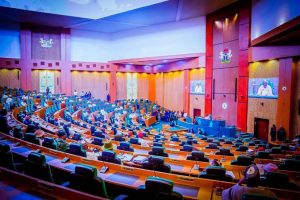
The recent killing of Onochie Abagana, a fisherman from Aguleri, has reignited tensions between the Aguleri and Anam communities. His brutal murder, allegedly at the hands of Anam youths, has left many in mourning and demanding justice. But while Onochie’s tragic death may have been the spark for the latest conflict, it is crucial to ask: is this the root cause, or just another chapter in a long history of disputes?
A Long-Standing Rivalry
The Aguleri and Anam communities, both located in Anambra State, have had a history of land disputes, resource struggles, and territorial claims. While these communities share cultural ties and geographical proximity, conflicts over fishing rights, farmland, and boundary lines have often led to violent confrontations.
The question now is whether Onochie’s death is just an isolated incident or a symptom of deeper underlying tensions. Many believe that beyond individual acts of violence, there is a broader struggle for dominance—one that has remained unresolved for years.
The Role of Land and Resources
In many parts of Nigeria, disputes over land ownership and access to natural resources have been at the heart of communal clashes. In the Aguleri-Anam conflict, fishing territories and farmland have long been sources of contention. With economic hardship increasing, the competition for these resources has intensified, making minor disagreements escalate into major confrontations.
Onochie’s case highlights this issue. As a fisherman, he was simply trying to earn a living when he was allegedly targeted. Was this an act of personal grievance, or was he a victim of a larger power struggle between the two communities?
The Failure of Mediation and Justice
One of the most concerning aspects of these conflicts is the failure of authorities to intervene effectively. Too often, government officials and local leaders respond only when violence erupts, rather than addressing the root causes beforehand.
If Onochie’s killers are not brought to justice, it will only reinforce the cycle of retaliation. The Aguleri people are grieving, and their calls for justice should not be ignored. However, justice should not mean further bloodshed—it should mean real accountability and preventive measures to stop future clashes.
What Needs to Change?
To prevent further violence, the following steps must be taken:
- Fair and Transparent Justice – Authorities must investigate Onochie’s murder thoroughly and ensure that those responsible are held accountable. Justice should be swift and fair to prevent further hostilities.
- Community Dialogue – Both Aguleri and Anam leaders need to come together for peace talks, addressing the longstanding grievances that fuel these conflicts. Traditional rulers, government officials, and youth leaders must be part of this conversation.
- Clear Land and Resource Agreements – To reduce disputes over fishing zones and farmland, a formal agreement must be established, clearly defining boundaries and usage rights.
- Stronger Law Enforcement – Security agencies must play a proactive role in preventing violence before it escalates. A visible and impartial presence of law enforcement could deter further attacks.
Final Thoughts
The death of Onochie Abagana is a tragedy, but it should not become an excuse for further violence. If the real issues behind the Aguleri-Anam conflict are not addressed, this cycle of bloodshed will continue. True peace will come not just from temporary ceasefires but from genuine dialogue, justice, and fair resource-sharing agreements. The time for action is now.
Let’s hope that Onochie’s death is not in vain—but instead serves as a wake-up call for lasting peace.
What do you think? Can the Aguleri and Anam communities find a peaceful resolution, or will history keep repeating itself?





